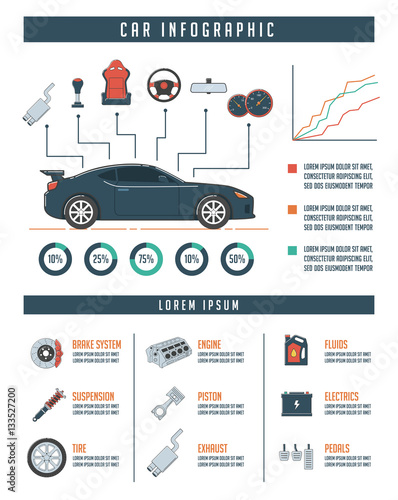Assessing Your Vehicle'S Caution Indicators: What They Actually Communicate
Assessing Your Vehicle'S Caution Indicators: What They Actually Communicate
Blog Article
Created By-Boye Forbes
When you're behind the wheel, those radiant caution lights on your control panel can be a bit bewildering. Do you know what they're attempting to inform you concerning your automobile's health? Comprehending the importance of these lights is essential for your safety and security and the durability of your car. So, the next time one of those lights pops up, wouldn't you wish to decipher its message precisely and take the required steps to address it?
Common Warning Lighting and Interpretations
Identify usual warning lights in your auto and understand their significances to ensure safe driving.
The most typical warning lights include the check engine light, which signals concerns with the engine or exhausts system. If this light begins, it's essential to have your car checked without delay.
the detailing specialist warning light shows reduced oil stress, requiring prompt interest to stop engine damage.
A blinking battery light could suggest a defective charging system, possibly leaving you stranded otherwise resolved.
The tire stress tracking system (TPMS) light signals you to reduced tire pressure, affecting automobile security and gas effectiveness. Overlooking this might lead to hazardous driving conditions.
The abdominal muscle light indicates a problem with the anti-lock stopping system, compromising your ability to stop quickly in emergencies.
Finally, the coolant temperature level alerting light warns of engine overheating, which can cause extreme damage if not settled quickly.
Understanding these usual warning lights will certainly help you deal with concerns immediately and maintain risk-free driving conditions.
Importance of Prompt Attention
Understanding the common caution lights in your car is only the primary step; the relevance of without delay attending to these cautions can not be highlighted enough to guarantee your security when driving.
When a warning light brightens on your dashboard, it's your auto's means of communicating a possible concern that needs attention. Disregarding these cautions can lead to a lot more extreme issues in the future, jeopardizing your safety and potentially costing you much more out of commission.
Trigger interest to cautioning lights can protect against break downs and crashes. For instance, a blinking check engine light could indicate a misfire that, if left neglected, might trigger damage to the catalytic converter. Resolving this immediately can save you from an expensive fixing.
Similarly, https://www.fox5dc.com/news/consumer-alert-global-shortage-of-car-parts-means-long-delays-higher-prices-for-repairs cautioning light might signify reduced brake fluid or worn brake pads, important elements for your safety when driving.
Do It Yourself Troubleshooting Tips
If you notice a warning light on your control panel, there are a few DIY troubleshooting ideas you can attempt before looking for professional help.
The primary step is to consult your vehicle's manual to comprehend what the details warning light shows. In some cases the concern can be as simple as a loose gas cap causing the check engine light. Tightening up the gas cap might deal with the issue.
Another usual issue is a reduced battery, which can set off various warning lights. Examining the battery connections for corrosion and ensuring they're safe and secure could repair the issue.
If a caution light persists, you can try resetting it by detaching the car's battery for a few minutes and then reconnecting it. In addition, inspecting your automobile's liquid levels, such as oil, coolant, and brake liquid, can assist troubleshoot alerting lights connected to these systems.
Final thought
In conclusion, recognizing your automobile's warning lights is crucial for keeping your vehicle running smoothly and securely. By quickly addressing these notifies and understanding what they mean, you can prevent pricey repair work and prospective break downs.
Keep in mind to consult your vehicle's manual for certain information on each warning light and take action accordingly to make sure a trouble-free driving experience.
Remain notified, stay risk-free when driving!
